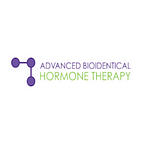Hormone Replacement Therapy: Benefits, Risks, and Considerations
Introduction:
Hormone replacement therapy (HRT) has long been a cornerstone of treatment for menopausal symptoms and hormonal imbalances in women. However, its use is not without controversy, as the benefits and risks must be carefully weighed for each individual. In this comprehensive guide, we will explore the benefits, risks, and important considerations associated with hormone replacement therapy, empowering women to make informed decisions about their hormonal health.
Understanding Hormone Replacement Therapy:
Benefits of HRT:
- Symptom Relief: Hormone replacement therapy is highly effective in alleviating menopausal symptoms such as hot flashes, night sweats, vaginal dryness, and mood swings. By replenishing declining hormone levels, HRT restores hormonal balance and improves overall quality of life for many women.
- Bone Health: Estrogen plays a crucial role in maintaining bone density. HRT can help prevent osteoporosis and reduce the risk of fractures in postmenopausal women by preserving bone mass and strength.
- Heart Health: Some studies suggest that estrogen therapy may have cardiovascular benefits, including improved lipid profiles and reduced risk of heart disease in younger menopausal women.
Risks and Concerns:
- Breast Cancer: The use of estrogen-progestin therapy (EPT) has been associated with a slightly increased risk of breast cancer, particularly with long-term use. Women considering HRT should discuss their individual breast cancer risk factors with their healthcare provider.
- Blood Clotting: Estrogen therapy, especially when combined with progestin, may increase the risk of blood clots, including deep vein thrombosis and pulmonary embolism. This risk is higher in women with certain medical conditions or a history of blood clotting disorders.
- Stroke: Some studies have found a small increase in the risk of stroke with the use of estrogen therapy, particularly in older women and those with other risk factors such as high blood pressure or smoking.
Considerations for Use:
- Individualized Approach: The decision to use hormone replacement therapy should be personalized based on each woman’s individual health history, symptoms, and risk factors. Discussing the potential benefits and risks with a healthcare provider is essential to make an informed decision.
- Type and Duration: There are different types of hormone replacement therapy, including estrogen-only therapy (ET) and estrogen-progestin therapy (EPT). The choice of therapy and duration of treatment should be tailored to each woman’s specific needs and preferences.
- Monitoring and Follow-Up: Women using hormone replacement therapy should undergo regular medical check-ups and monitoring to assess their response to treatment and monitor for any potential side effects or complications.
Conclusion:
Hormone therapy can offer significant benefits for women experiencing menopausal symptoms and hormonal imbalances. However, it’s essential to weigh the potential benefits against the risks and make informed decisions based on individual health factors and preferences. By discussing the benefits, risks, and considerations with a healthcare provider, women can determine whether hormone replacement therapy is the right option for them and receive personalized care to optimize their hormonal health and well-being.
